 |
 |
 |
| |
HIV infection independently increases the risk of developing heart failure: The HIV HEART study
|
| |
| |
HIV linked to higher risk of heart failure in 425,000-person US comparison
22nd International AIDS Conference, Amsterdam, Netherlands, July 23-27, 2018
Mark Mascolini
from Jules: whats concerning is the average age of participants in only 41. Although the risk is 50% higher in HIV+ the absolute risk is relatively low at 7.2% for HIV+ vs 4.4% for HIV-negatives, but at age 41. Heart disease is probably the #1 concern for aging, just as it is for HIV-negatives, but HIV+ have so many extra risk factors, including ART history, lack of exercise, poor diet, contribution by ARTs, HIV-driven inflammation & immune activation etc. By one of the 4 models in this study risk for failure was 75% higher in HIV+, again average age is only 41 in this study. The use of statins in older aging HIV+ has issues & is under study by NIH in REPRIEVE Study, but among HIV-negatives statin use among elderly has controversy.
Four statistical models independently linked HIV infection to a 50% or higher risk of incident heart failure [from Jules: in looking at slide below in different models risk goes as high as 75% increased in one model] in a comparison of 425,000 adults with or without HIV infection [1]. Neither atherosclerotic disease nor use of cardiopreventive medications appeared to drive the association between HIV and heart failure.
Researchers from the Kaiser Permanente healthcare system noted that heart failure leads all causes of hospital admission in the United States. More than a half-million cases of heart failure get diagnosed in the United States every year. Modelers project that the US population burden of heart failure will jump 46% from 2012 through 2030.
Numerous studies chart an excess risk of cardiovascular complications in people with HIV infection because of traditional risk factors, ongoing inflammation, and certain antiretrovirals. Combined analysis of 36,400 people with HIV infection and 12.2 million controls in 23 US healthcare systems charted a heart failure prevalence of 7.2% with HIV versus 4.4% in controls (relative risk 1.66, 95% confidence interval 1.60 to 1.72, P < 0.0001) [2]. Heart failure risk with HIV was particularly elevated in women and younger people. But only limited data address a possible link between HIV and incident (newly diagnosed) heart failure. The Kaiser team conducted this comparison to address that question.
The study involved members of 3 Kaiser Permanente healthcare systems in California and Mid-Atlantic states. The Kaiser team identified people with HIV at some point between 2000 and 2016 and matched them 1-to-10 with HIV-negative people by age, sex, race/ethnicity, medical center, and calendar year. They used a validated algorithm to determine development of incident heart failure in both groups. The analysis involved 38,868 adults with HIV and 386,586 HIV-negative adults.
Age of study participants averaged 41.4 years and 12.3% were women. While 38% were white, 21% were black, 20.5% Hispanic, and 3.9% Asian/Pacific Islander. Similar proportions of HIV-positive and negative people were current or former smokers (13.8% and 13.7%), while higher proportions of people with HIV had low household income (10.8% versus 8.5%) or reported illicit drug use (4.4% versus 2.4%) or alcohol abuse (3.5% versus 3.2%) [from Jules: dementia is 14.6% vs 0.2% in HIV+ vs HIV-neg. Cancer rates are 2.5% vs 1.6%.
Chronic liver disease is 2.3% vs 1.5%. Depression is 7.6% vs 5.2%]. People with HIV had higher rates of chronic liver disease, diagnosed dementia, diagnosed depression, and systemic cancer but lower rates hypertension, dyslipidemia, and diabetes.
Among people with HIV, only 17.6% used antiretroviral therapy at their baseline visit, 12.6% had a CD4 count below 200, 23% had a count between 200 and 499, 21.1% had a count of 500 or higher, and the rest had an unknown baseline CD4 count. About 1 in 5 people with HIV had a baseline viral load below 200 copies.
Heart failure incidence (the new-diagnosis rate) proved significantly higher with than without HIV (0.24 versus 0.16 per 100 person-years). Through 200 months of follow-up, cumulative incidence exceeded 4% in people with HIV versus about 3% in the HIV-negative group (P < 0.001).
Researchers used 4 Cox proportional hazards models to assess independent associations of HIV with incident heart failure. With all 4 models HIV independently predicted heart failure. Model 1 (adjusted for healthcare system, entry year, and demographics) linked HIV to a 54% higher heart failure risk (adjusted hazard ratio [aHR] 1.54). Model 2 (adjusted for model 1 variables plus cardiovascular and other medical history) saw a two thirds higher heart failure risk with HIV (aHR 1.69). Excess risk was similar with model 3 (model 2 variables plus targeted prescription medication use, aHR 1.75) and model 4 (model 3 variables plus interim acute coronary syndrome events, aHR 1.66).
The Kaiser investigators concluded that HIV infection independently predicts incident heart failure, but the excess risk "does not appear mediated through atherosclerotic disease pathways or differential use of cardiopreventive medications."
References
1. Go AS, Horberg M, Reynolds K, et al. HIV infection independently increases the risk of developing heart failure: The HIV HEART study. AIDS 2018: 22nd International AIDS Conference, Amsterdam, Netherlands, July 23-27, 2018. Abstract THAB0103.
2. Al-Kindi SG, ElAmm C, Ginwalla M, et al. Heart failure in patients with human immunodeficiency virus infection: epidemiology and management disparities. Int J Cardiol. 2016;218:43-46.
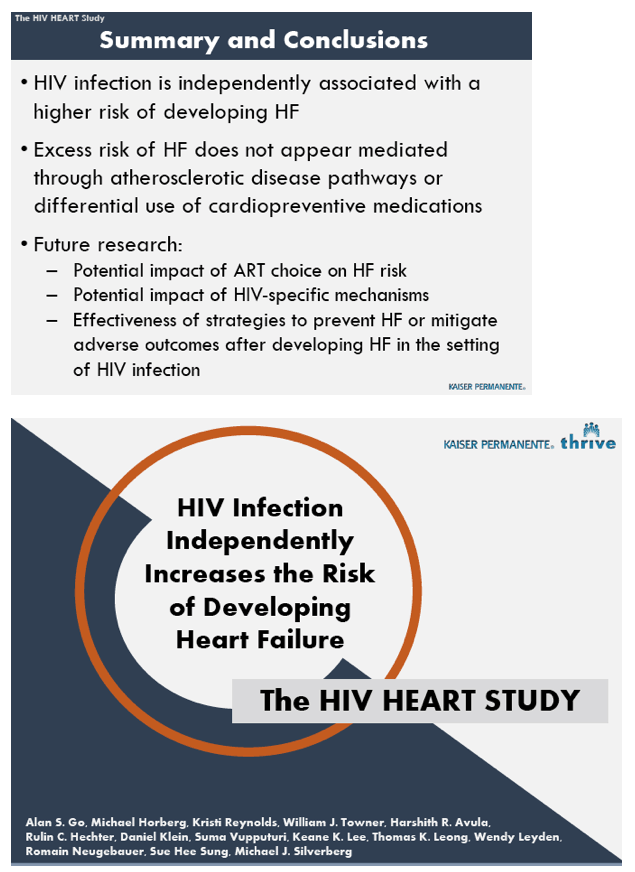
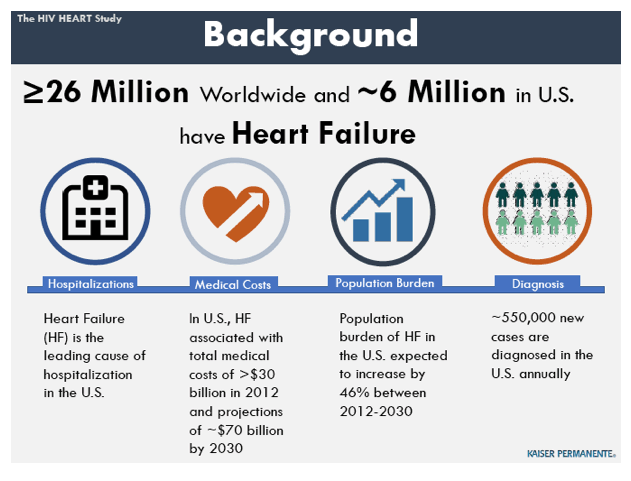
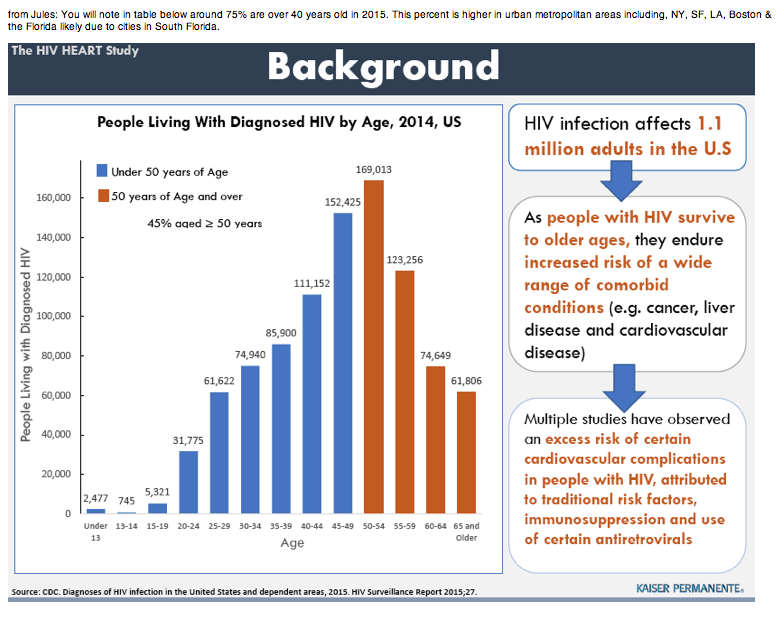
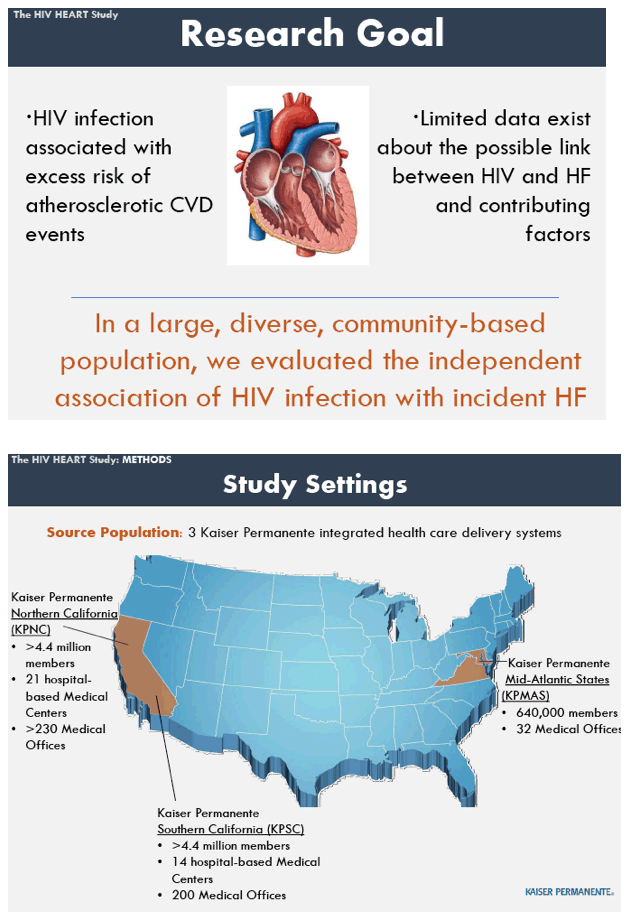
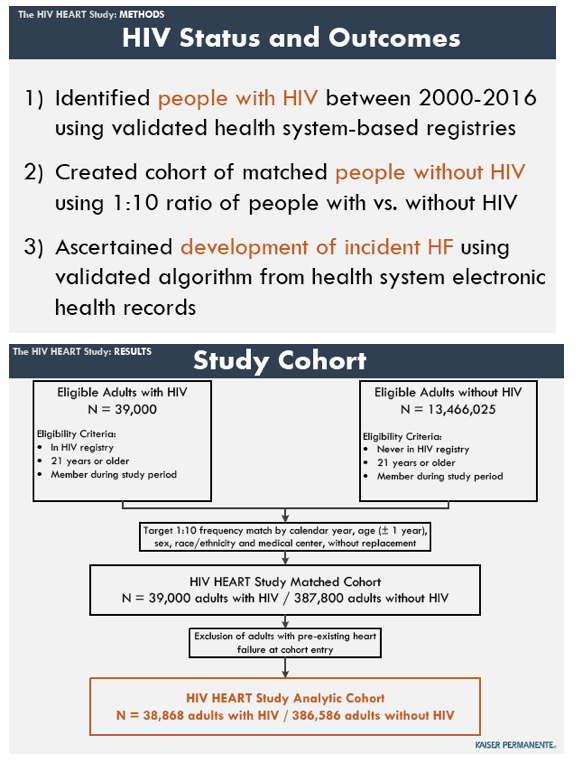
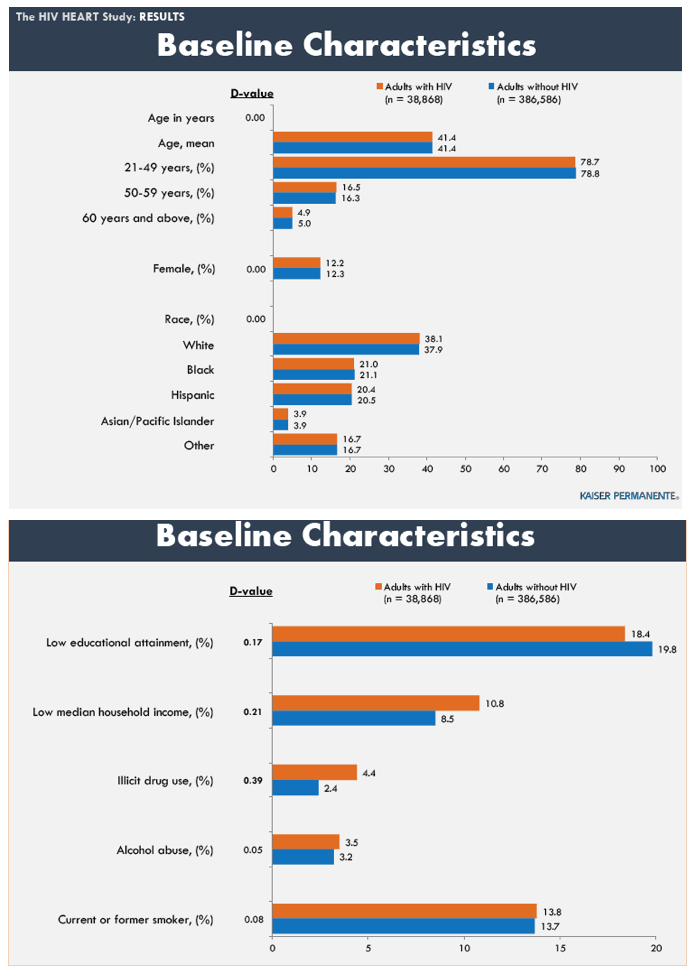
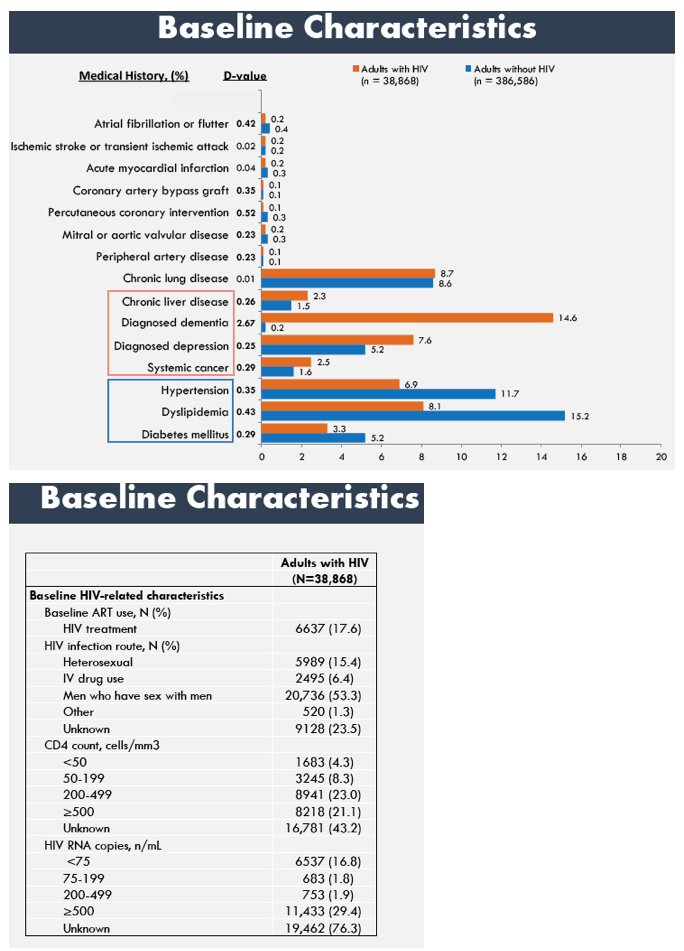
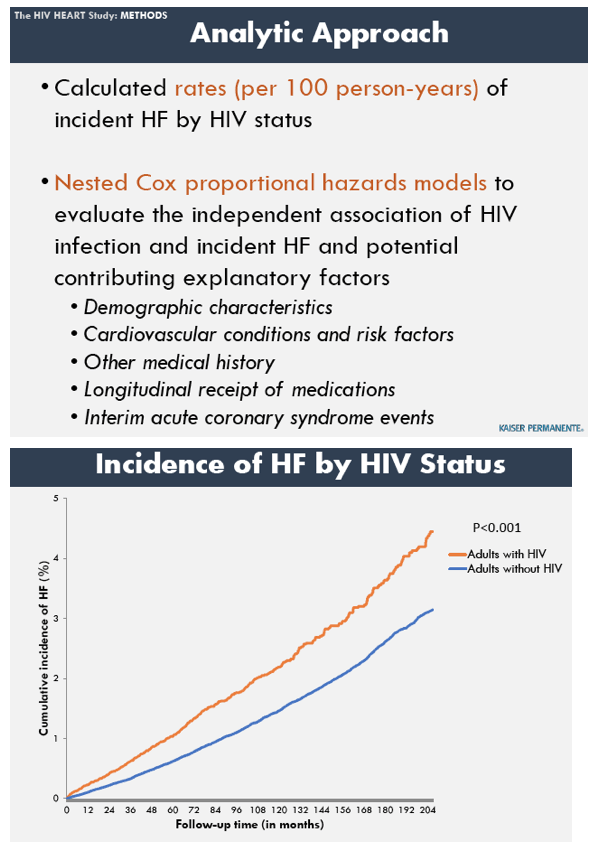
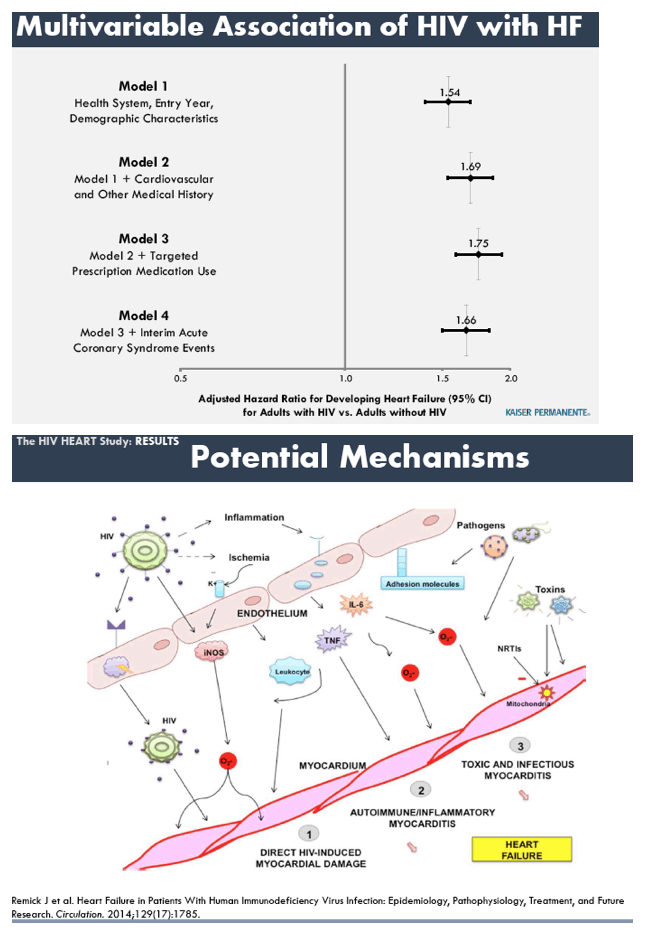
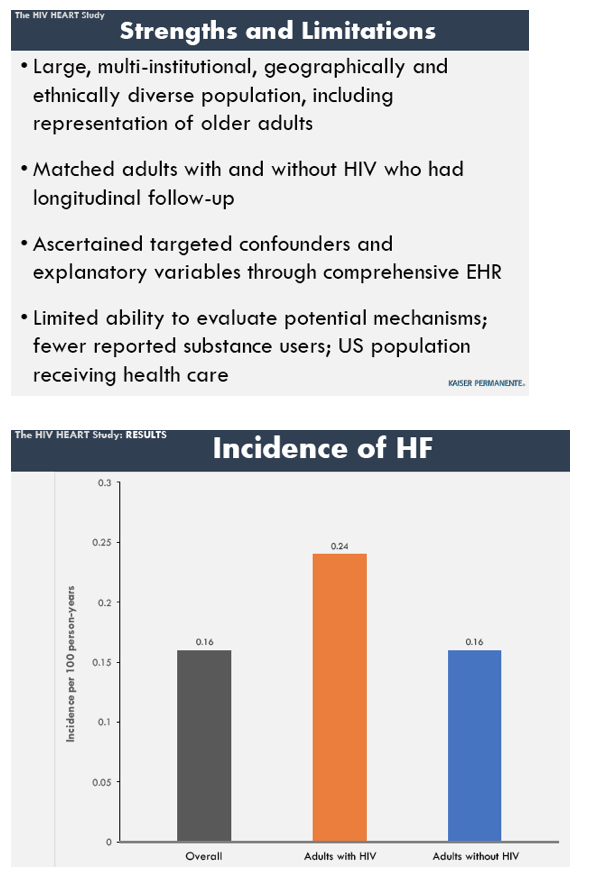
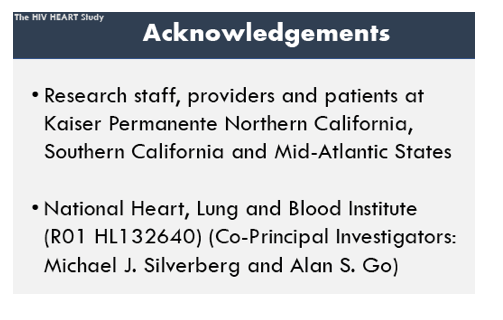
|
| |
|
 |
 |
|
|